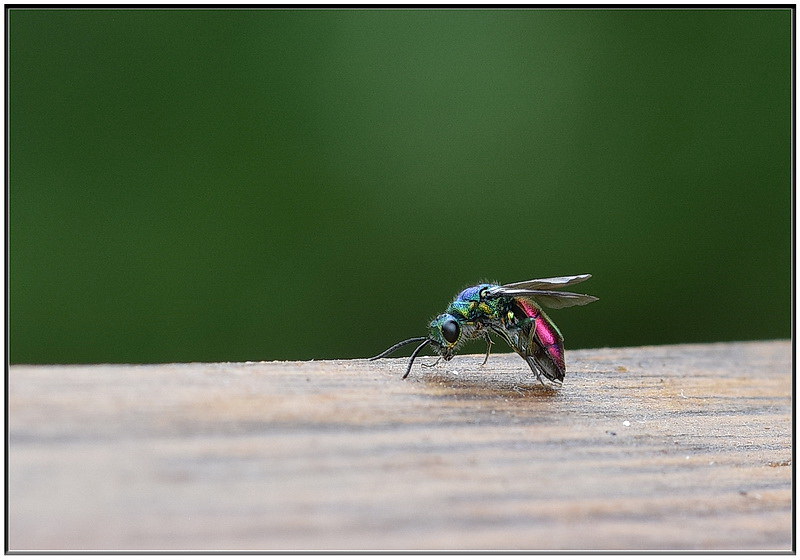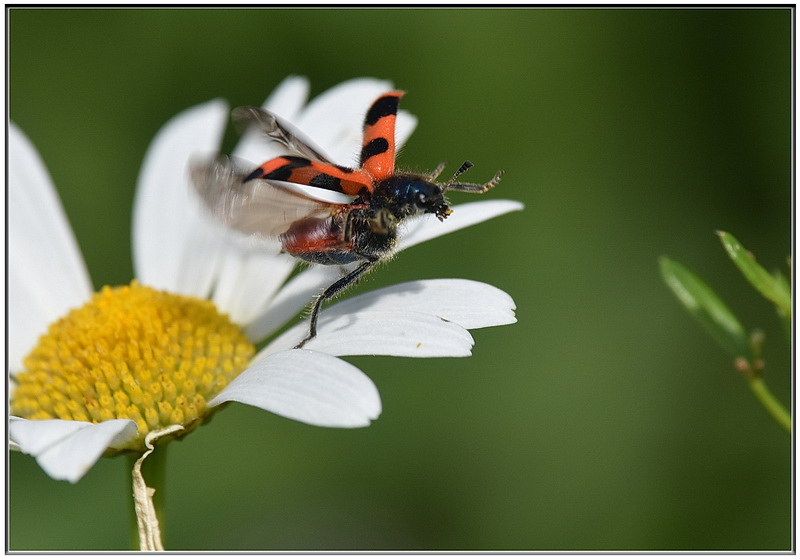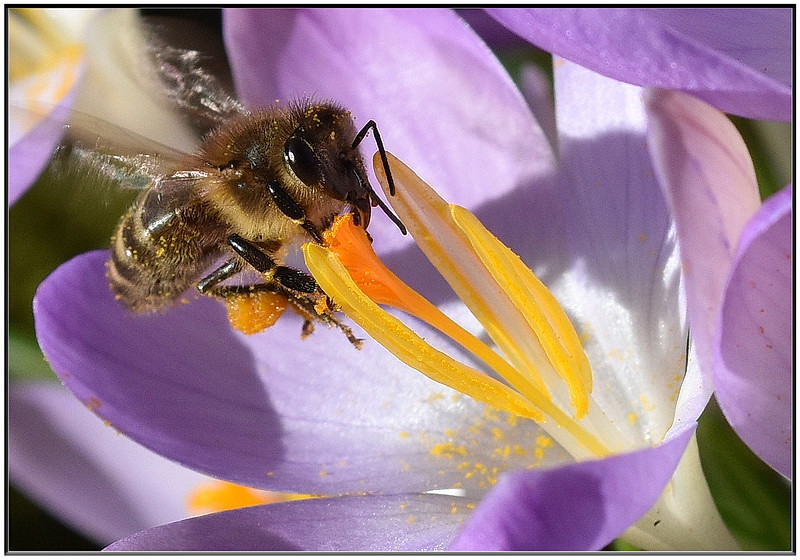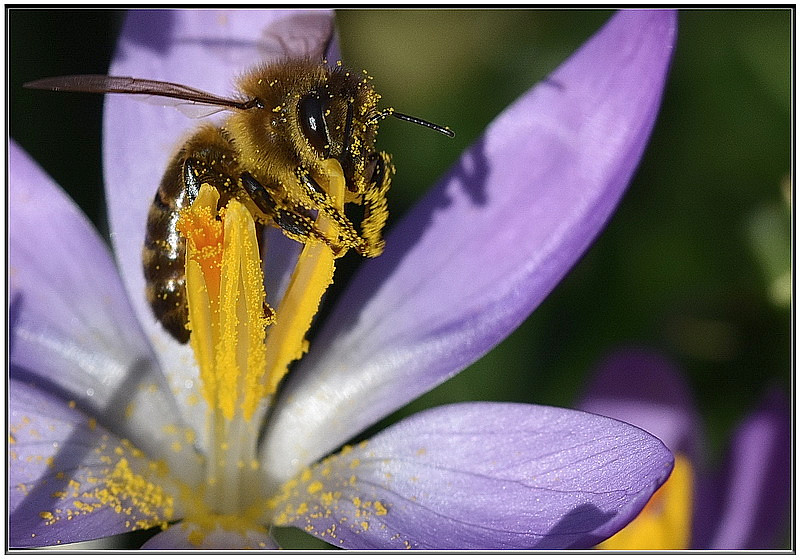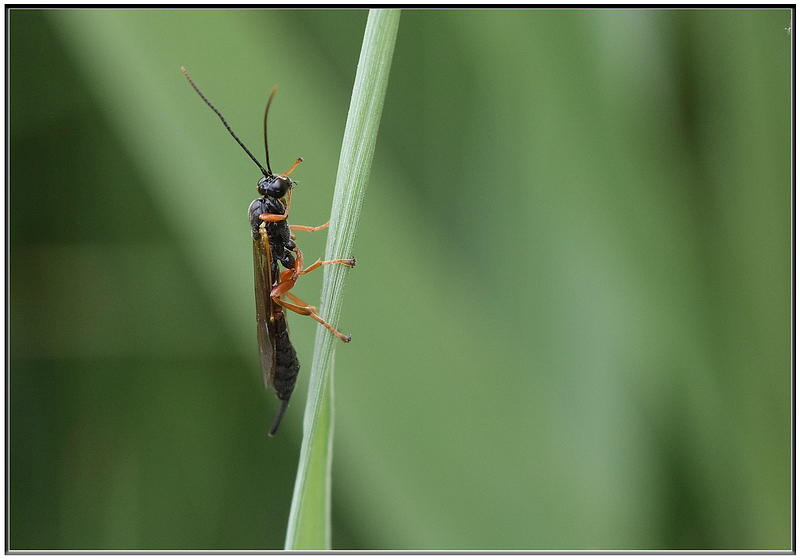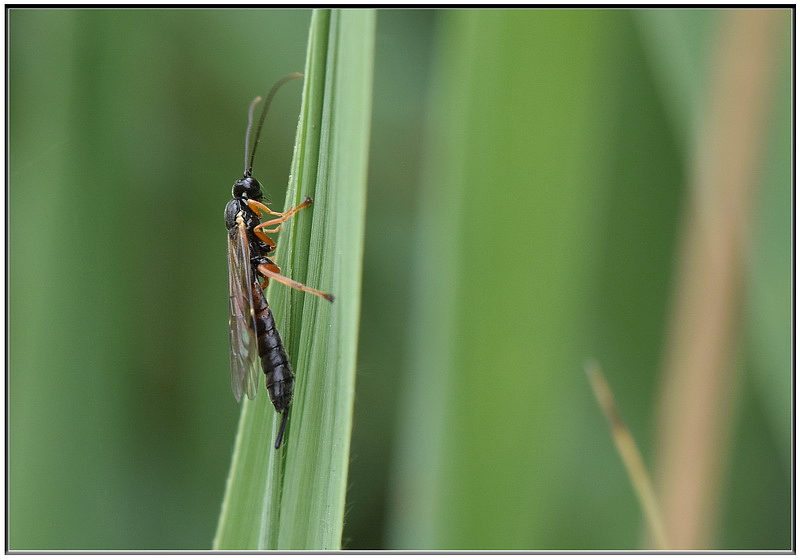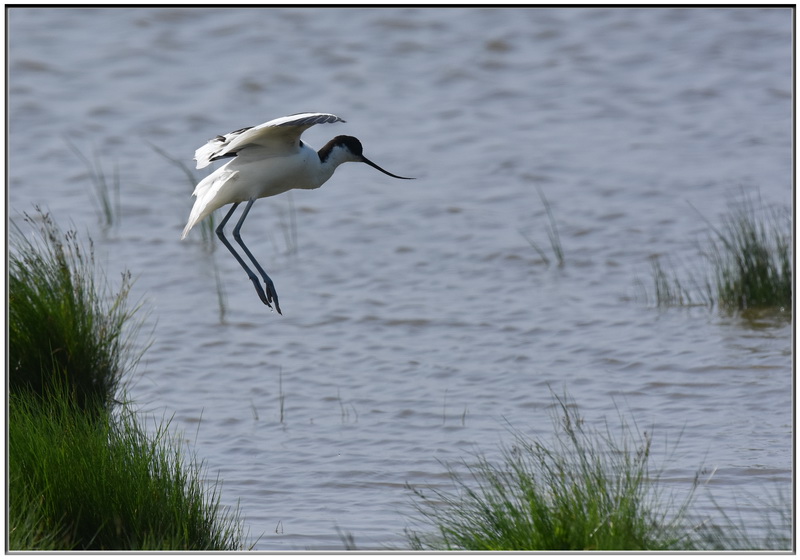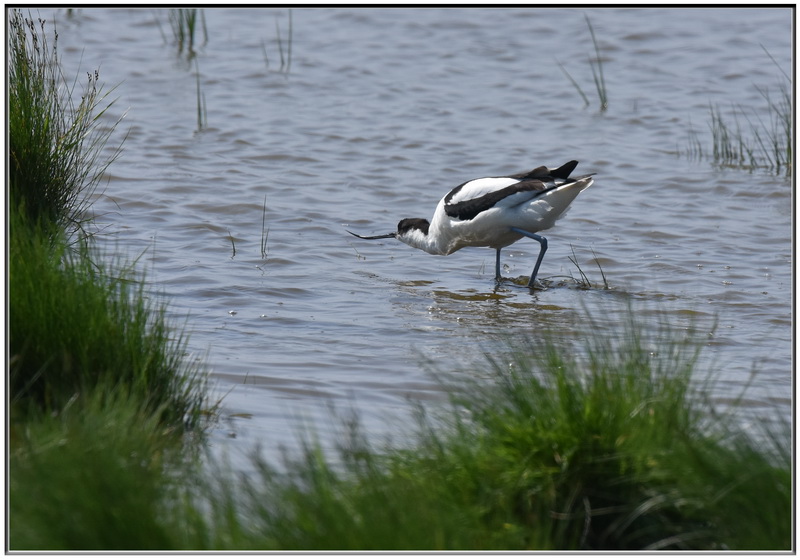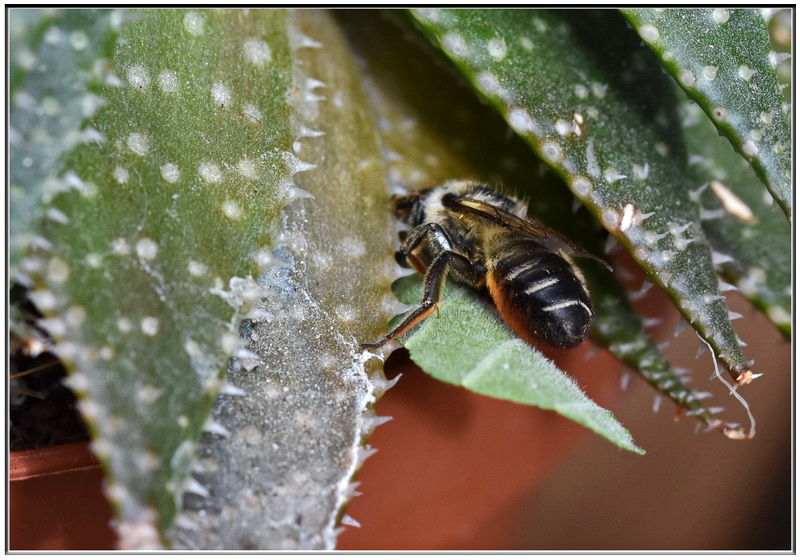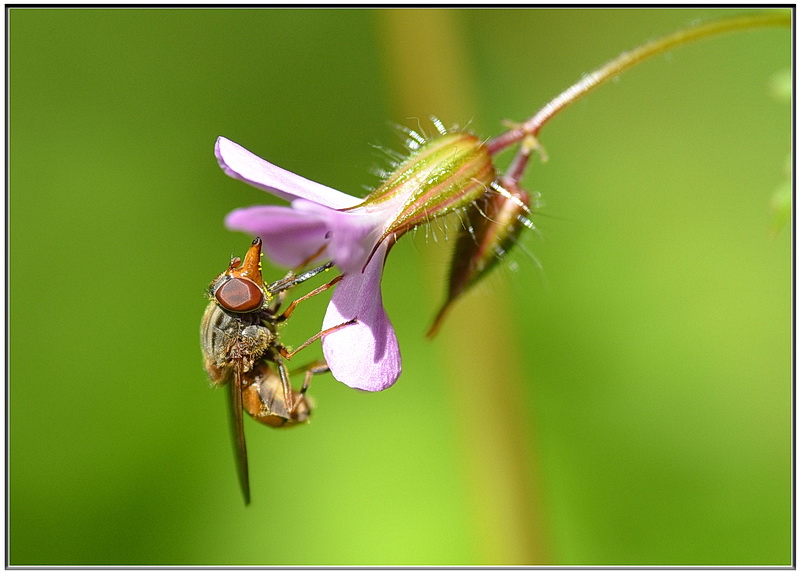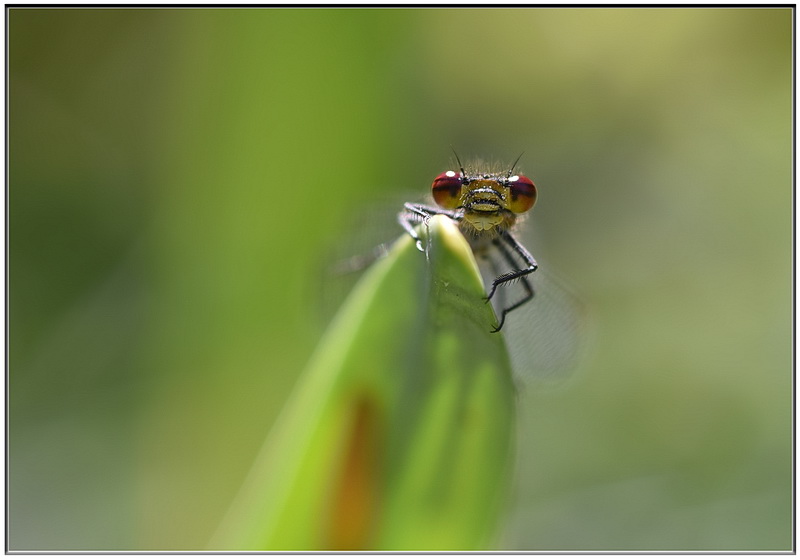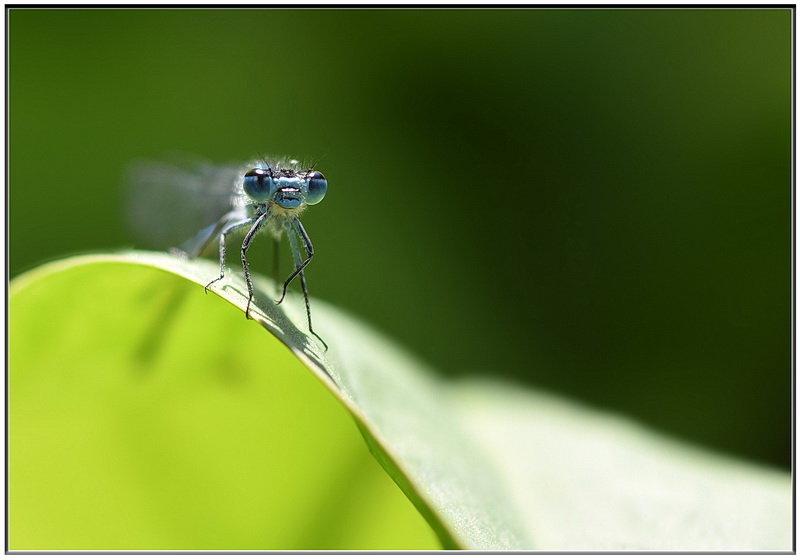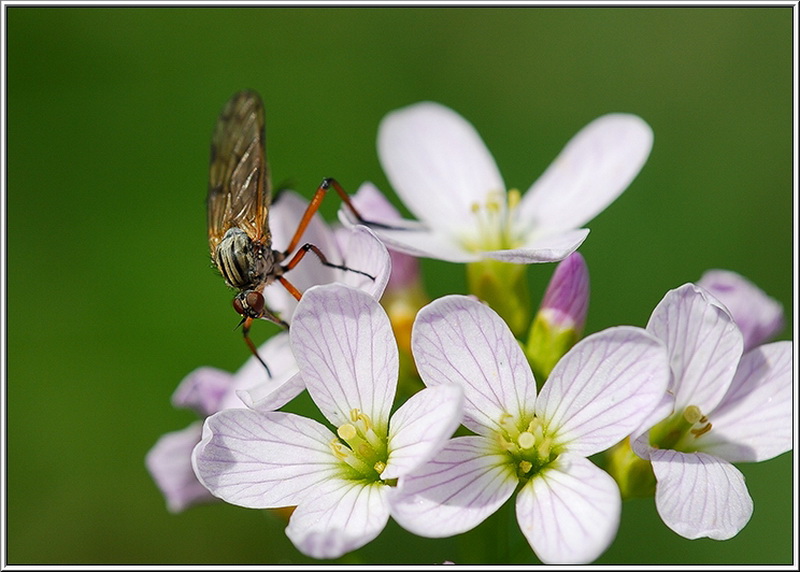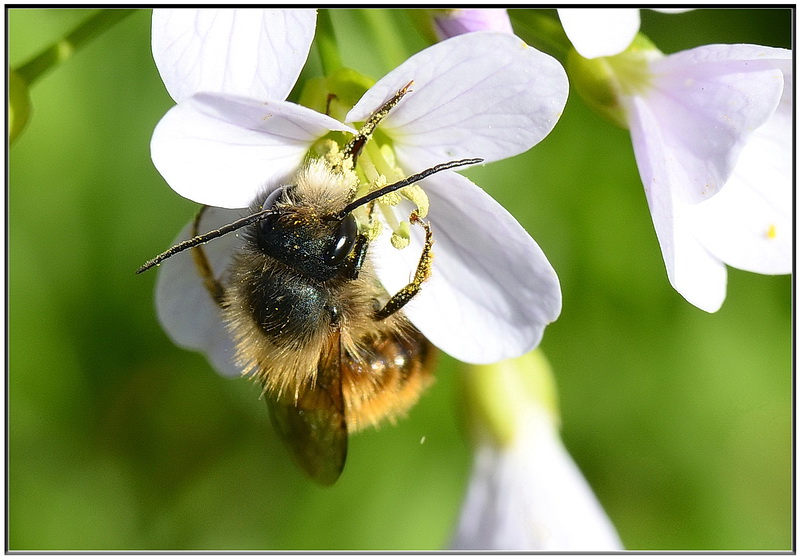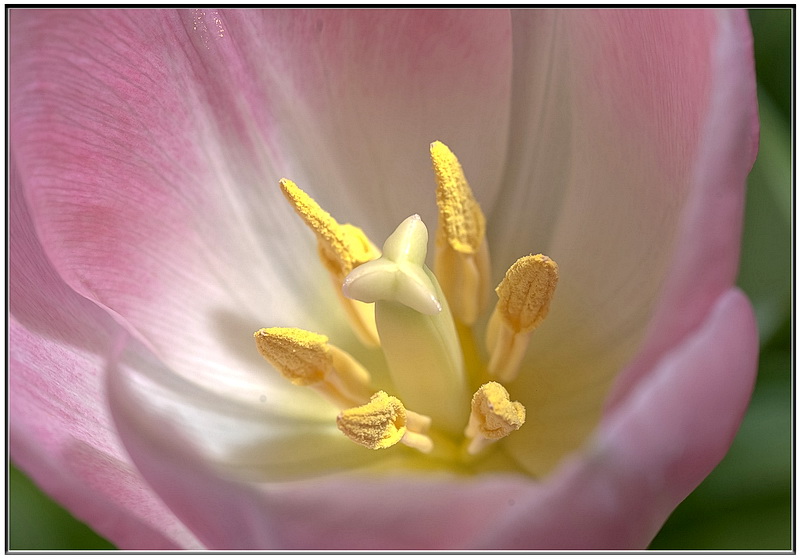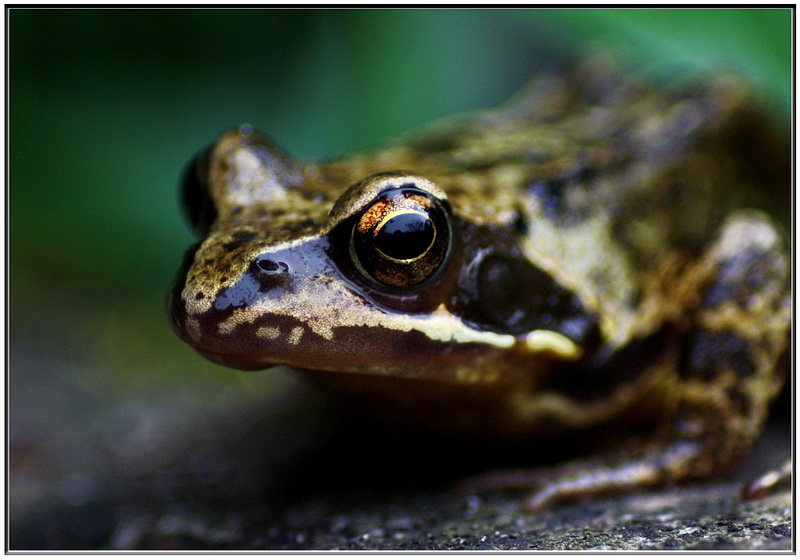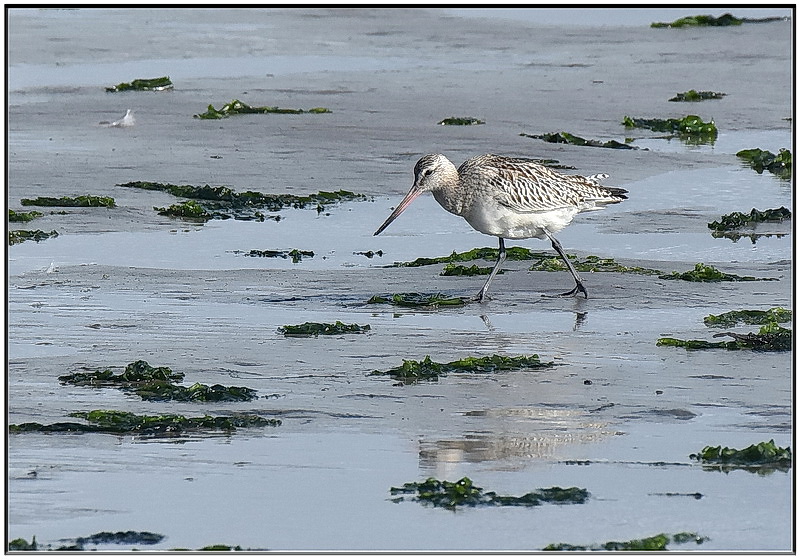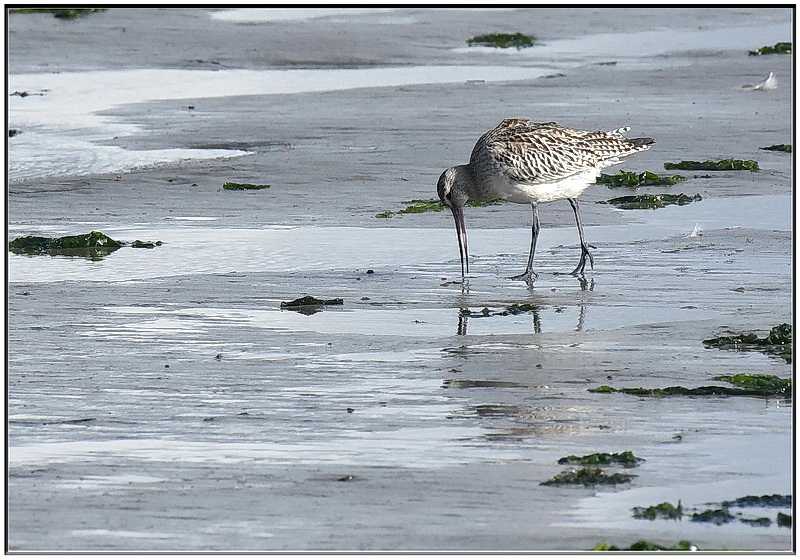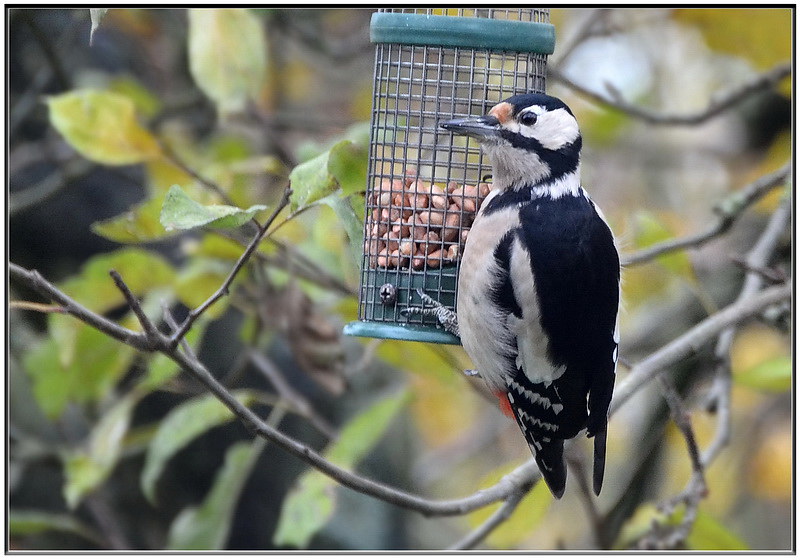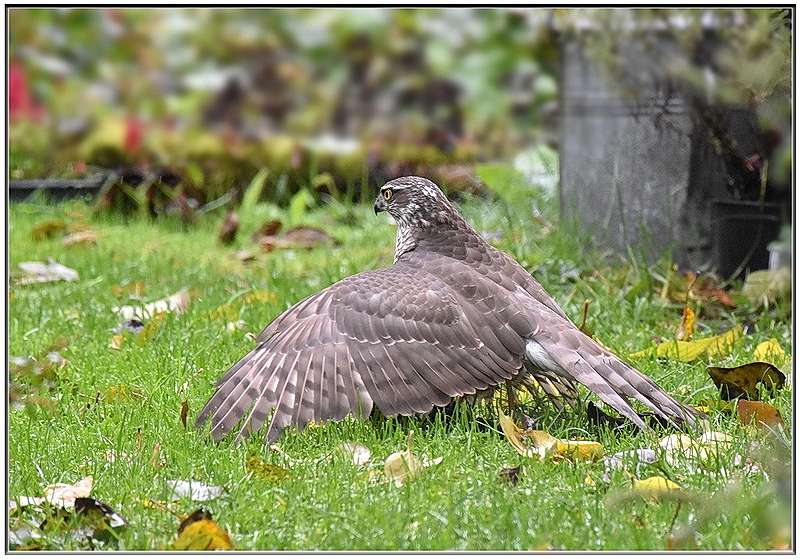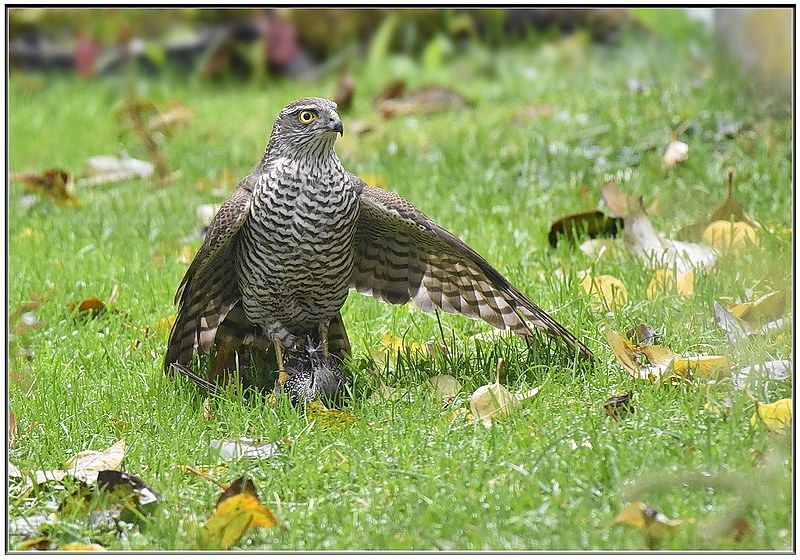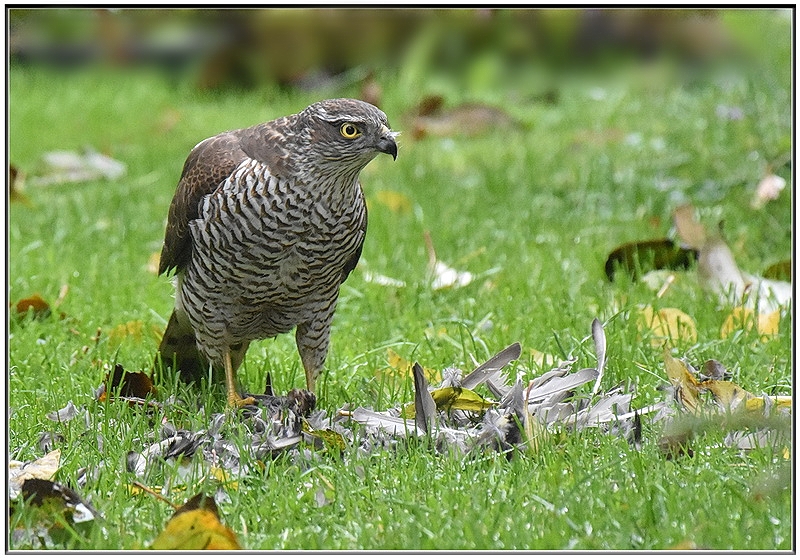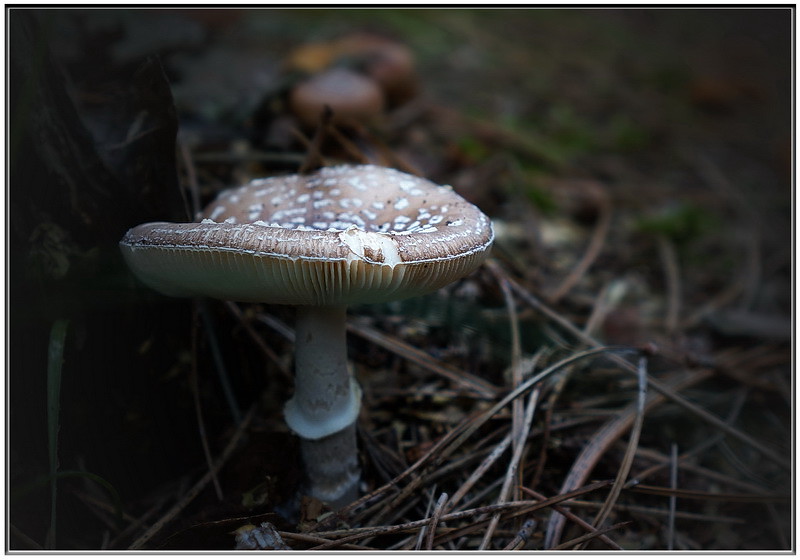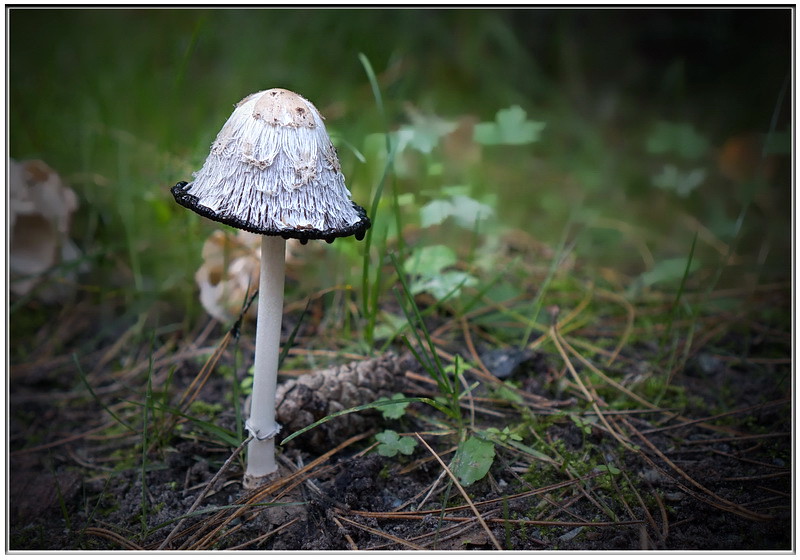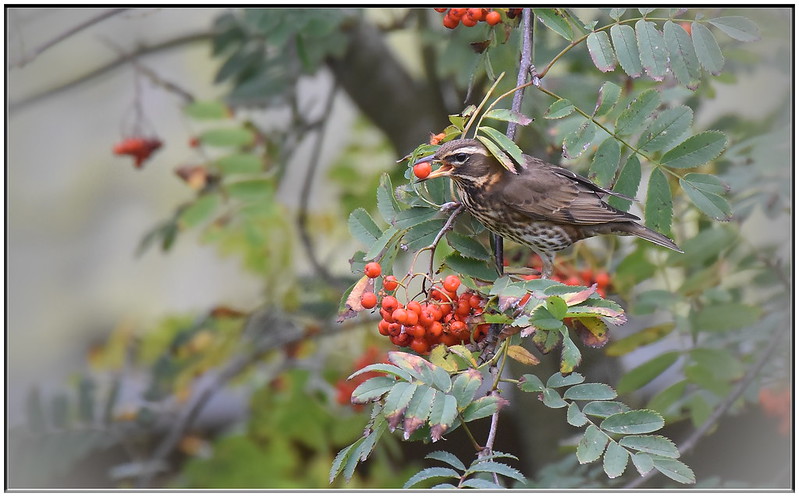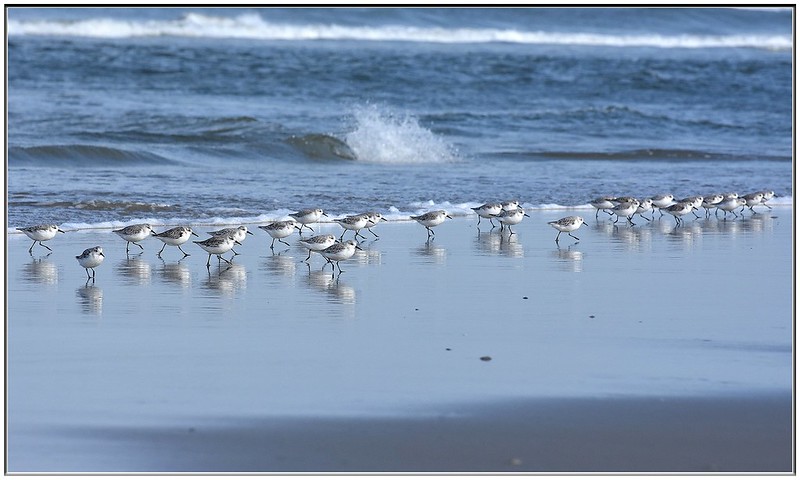The Cuckoo wasp, also known as Emerald wasp, is easely one of the most colourful insects of Western Europe. This one behaved like a true model and allowed me a photoshoot.
Category: nature
Wolf
In my previous post I showed you a bug that liked to blend into the background, but this beetle obviously does not feel that way. It is a Trichodes apiarius. I could not find an english name for it, but in dutch we call it a ‘beewolf’, because the female lays her eggs in the nests of solitary bees and in the hives of honeybees where the larvae eat the bees in all stages of development.
Honeybees
Today it was unseasonably warm and sunny here in the Netherlands and so, though it is only february, all the crocuses were open and the honeybees were having their first flights of the year. They were loaded with the pollen they had collected: big clumps at their feet while little bits were covering their bodies everywhere.
Leafcutterbees – behangersbijen
This summer various kinds of leafcutter bees invaded our greenhouse. They were building their little nests in small holes they dug themselves under the cacti and other succulents, using little bits of leaf from the rosebushes. It was great fun to see them struggle because the bits of leaf were often much bigger than the insect itself.
Deze zomer hadden veel bezoek van behangersbijen die in kas onder de cactussen en vetplanten kleine holletjes groeven en daarin met stukjes rozenblad hun nestjes bouwden. Het was een grappig gezicht ze te zien worstelen met die stukjes blad die vaak veel groter waren dan zijzelf.
Rhingia campestris – snuitvlieg
This is supposed to be the Rhingia campestris, easely recognizable by his distinctive long snout. So in dutch he is called ‘ordinary snout fly’, but I don’t think that name is used in english as well.
Dit is de gewone snuitvlieg ofwel Rhingia campestris. Gemakkelijk te herkennen aan – jawel – zijn lange snuit.
Damselflies
After a few hot and sunny days there are lots of damselflies hovering a round the pond. I love them. Though they are predators of course, they look like funny little aliens. The first picture is the large red damselfly and the second one of the many blue varieties. Don’t know which one.
Na een paar warme zonnige dagen zie je massa’s waterjuffers bij de vijver. Het zijn natuurlijk roofdiertjes maar ze zien er zo grappig uit met hun ronde oogjes. De eerste foto is een vuurjuffer en de tweede een van de vele blauwe soorten. Geen idee welke.
Cuckooflower – pinksterbloem
I have been extremely busy these last few months and did not have any time to go out taking pictures. However one of the rare sunny days in april when I walked into my own back yard and saw all those bugs visiting the cuckooflowers I could not resist and grabbed my camera.
Ik heb het extreem druk gehad de laatste maanden en had absoluut geen tijd om te fotograferen, maar toen ik op één van die zeldzame zonnige dagen de achtertuin in liep en al die insecten druk bezig zag op de pinksterbloemen kon ik het natuurlijk niet laten mijn camera te pakken.
Tulips
I have seen lots and lots of tulip pictures these last few weeks. Apparently they are inspirational flowers. Maybe because of there shape. They seem to have an almost modern design. Anyway, here are mine:
Er zijn de laatste weken enorme hoeveelheden tulpfoto’s geplaatst. Blijkbaar zijn het inspirerende bloemen, misschien door hun strakke vorm . Hoe dan ook, ik kon natuurlijk niet achterblijven, dus hier zijn de mijne.
Spring – Lente
It was my intention to start blogging again ‘sometime in spring’. But spring was slow in coming this year. At least here in the Netherlands it has been very cold en windy most of the time. The animals however were not deterred by a bit of cold. At least for these frogs is was business as usual.
Het was mijn bedoeling ‘ergens in de lente’ weer met bloggen te beginnen. Maar de lente was dit jaar koud en waaierig en tot nu toe kwam mijn camera nog maar een enkele keer uit de kast. Deze kikkers hadden overigens nergens last van. Voor hen was het business as usual.
Bar-tailed godwit – Rosse Grutto
Bartailed godwit in winter feathers, probing the mud of The Waddensea for something to eat. This picture was taken in the Netherlands but many of these birds fly non-stop from their breeding place on the Arctic coast to New Zealand for the winter. That is more than 10.000 km and that takes them about a week!
Rosse grutto in winterkleed zoekend naar voedsel in een drooggevallen stukje waddenzee. Dit exemplaar is gefotografeerd bij Terschelling, maar de meeste van deze vogels vliegen in één keer door van hun broedplaats in Alaska naar hun overwinterplek in Nieuw Zeeland. Dat is ruin 10.000 km en dat doen ze in ongeveer een week!
.
Great Spotted Woodpecker – Grote Bonte Specht
My most faithful followers may have noted that the frequency of my blogposts has gone down dramatically. That is because it is cold, dark and wet outside and I am not the kind of photographer who is prepared to suffer great hardships because of his, or in this case her, “art”. Most days I am down to watching the birds in my rear garden, like this great spotted woodpecker who was interested in one of our feeders.
So don’t expect too much of me these coming months. Hopefully I will be back in full force as soon as spring is here.
Mijn trouwste bezoekers hebben misschien gemerkt dat de frequentie van mijn blogposts recentelijk dramatisch gedaald is. Dat komt doordat het koud, donker en nat is buiten en ik eigenlijk gewoon een mooi-weer-fotografe ben. Dus de meeste dagen kom ik niet veel verder dan het spotten van de vogels in onze achtertuin zoals deze grote bonte specht die interesse had in onze pinda’s.
Verwacht dus niet te veel van mij de komende maanden. Hopelijk ben ik weer helemaal terug zodra het lente is.
Sparrowhawk – sperwer
Some days you just get lucky. Today a sparrowhawk chose our rear garden for his picknick – a starling he just catched. It was a rather unpleasant sight at first, when his prey was still alive, but of course I could not get a photo opportunity like this go to waste. Photo’s taken from behind the window.
Vandaag landde een sperwer in one achtertuin om zijn prooi – een spreeuw – op te peuzelen. Eerlijk gezegd was het een akelig gezicht. Vooral toen zijn prooi nog leefde, maar aan de andere kant kon ik zo’n fotomoment natuurlijk niet voorbij laten gaan. Foto’s uiteraard van achter het raam genomen.
.
More Mushrooms
I love shooting mushrooms. They are beautiful, mysterious and cooperative. Unlike birds and insects they don’t flee as soon as they spot a camera.
Ik fotografeer graag paddestoelen. Ze zijn mooi, mysterieus en ze werken tenminste mee. Anders dan vogels en insecten gaan ze er niet vandoor zodra ze een camera spotten.
Redwings – Koperwieken
It took a flock of redwing only two days to eat away all the berries of a whole row of rowanberry trees. Even the berries that had dropped were devoured.
Het kostte een zwerm koperwieken maar twee dagen om een hele rij lijsterbessen leeg te eten. Zelfs de bessen die op de grond gevallen waren werden verorberd.
Long legs – lange benen
The common redshank has wonderful long bright orange legs. While I can understand that it is a good thing for waders to have long legs, I don’t quite understand the bright orange bit. Surely there is a good reason apart from it being pretty?
De tureluur heeft mooie lange, fel oranje poten. Nu kan ik goed begrijpen dat lange poten handig zijn voor een waadvogel maar dat felle oranje snap ik niet zo goed. Toch zal daar best wel een goed reden voor zijn, behalve dan dat het er leuk uitziet.
.
Sanderlings – Drieteenstrandlopers
I posted about these birds before. I have to capture them whenever I see them. They are so cute and funny the way they behave. There were hundreds of them at the beach of Terschelling this year running along the waterline looking for shellfish and little crabs to eat.
Ik heb al eerder foto’s geplaatst van deze vogeltjes. Ik kan het niet laten ze te fotograferen als ik ze zie en er waren er honderden op het strand van Terschelling dit jaar. Ze renden langs de golven op zoek naar aangespoelde schelpdieren en kleine krabbetjes.

They was mainly shellfish and little crabs on the menu.
Er stonden voornamelijk schelpdieren en kleine krabbetjes op het menu.

